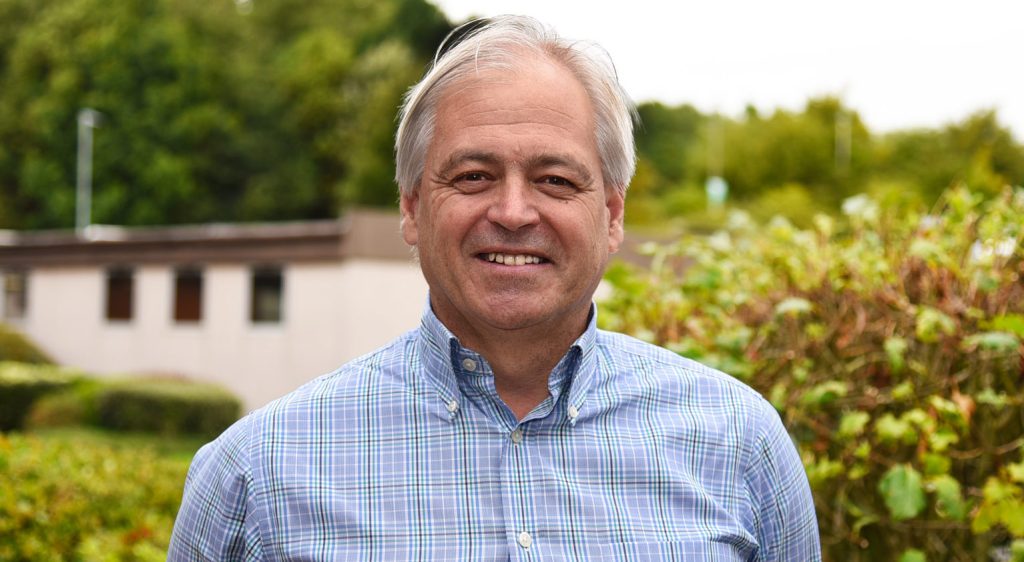
Creating a truly integrated system with Nottinghamshire’s ICS

Dr Andy Haynes, Clinical director for the Nottingham and Nottinghamshire Integrated Care System (ICS) and deputy chief executive at Sherwood Forest Hospitals Foundation Trust, explains why building trust is fundamental in creating a truly integrated health and care system.
Background
We were chosen as one of the first areas in the country to develop into an ICS, partly due to our strong history of partnership working. This includes five vanguards and shared pathways between the two acute hospitals.
Our system has a total budget of approximately £3.1bn. We have created three Integrated Care Providers (ICPs) and 22 Primary Care Networks (PCNs). We serve a population of one million and some of our communities experience the highest and lowest levels of deprivation in the country.
Our journey so far
We have learnt a great deal on our journey to becoming an ICS over the past three years. Whilst the anatomy and physiology of ICSs across the country differ, there are always lessons to share. We have found conversations with other systems incredibly helpful.
A crucial part of our progress has been around establishing trust across the system. Clearly this is a lengthy process which requires honest conversation, genuine listening and a common cause.
We have invested time into nurturing relationships and this has proven to be time well spent. We must keep an eye on the future so that our emerging leaders understand the benefits of collaboration across organisational boundaries. As health leaders, we are reaching out to local authority colleagues and want them to be engaged in decision making at all levels – neighbourhood, place and system. This is vital if we are to fully realise the best inputs and outcomes for our population.
Drivers
We face significant health inequalities. Across a single street in the north of our area, we can see a 15-year gap in healthy life expectancy. In the south, there is a 20-year gap between two villages which are only a 20 minute drive away.
This inequality is visible in access to health and care services too. It is easier to see a GP in some areas than others. People tell us that they are forced to explain their health and care problems to multiple people before receiving the support they need. Access to emergency care and mental health services is also inconsistent. Workforce remains a significant challenge in the East Midlands for aspects of medical and nursing recruitment.
As an ICS we will have much more freedom to manage local services and spend money on health and care. A key focus will be preventing illnesses and providing more services near where people live. This will involve all health and care services working together.
What has worked well?
We are already seeing that collaboration works. Our work to identify people at risk of stroke has already prevented 44 strokes and 12 deaths; our care homes vanguard has resulted in a one-third reduction of emergency admissions for residents who are offered enhanced support.
The ICS Board, which now meets in public, has been advised by a Clinical Reference Group since it began. This multidisciplinary group has been successful in ensuring we maintain a focus on alcohol, cancer and prevention, plus it has encouraged the roll-out of successful interventions across the whole system. Examples include a significant mental health strategy, a system-level outcomes framework, and a single QI methodology.
We have 22 PCNs that are forming, accelerated by the Long-Term Plan, and senior clinical leaders are engaging in creating the transformation in services at this level. Primary care has embedded multidisciplinary risk stratification to help target specific patient groups and offer appropriate interventions. We have consolidated IT/data systems to give rich information.
We recently received funding to carry out additional lung health checks for the early detection of lung disease. We know from previous work that offering scans in places people visit regularly like supermarkets is an excellent way to catch lung cancer and other respiratory diseases sooner. This project has the potential to save many lives in our local communities.
A multi-provider alliance for musculoskeletal services has improved access, reduced costs, and is developing shared decision making, all whilst reducing outpatient attends, which has significantly increased conversion rates.
Future thoughts
It is important to acknowledge that different parts of the ICS will have variable levels of maturity, so knowing how to best support progression is important. Agreeing single versions of activity data is essential to create a baseline from which to measure change. Data can be looked at from an ICS, ICP and PCN perspective. The latter will become increasingly important to reduce health inequalities and understand demand.
Financial thinking must develop to track cost to the ICP, rather than individual organisation, with conversion rates to appropriate surgery. This is the only way that the true financial impact of changes will be assessed.
Finally, the conflict of separate performance management for organisations and the ICS system by regulators must be resolved. This will require courage from all parties.